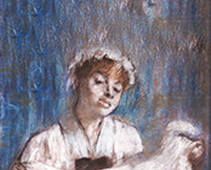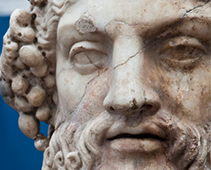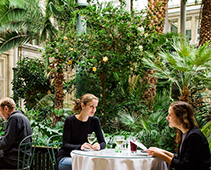Exhibition: 7th June – 1st September 2013
“No art is less spontaneous than mine,” asserted Edgar Degas (1834-1917). “What I do results from reflection and the study of the great masters; I know nothing of inspiration, spontaneity and temperament.”
With characteristic dry humour, Degas presents his artistic endeavours as the result of other people’s hard work and artistic originality, but this is hardly the whole story. From the start Degas enjoyed acknowledgement and respect – and not only in contemporary Paris: posterity too has long established Degas as one of the absolutely critical figures in the story of modern painting.
Famous as he is for his ballet dancers, Degas needs no further introduction, but taken in its entirety his work contains more than the colourful tulle-clad female figures. Degas’ approach to art is highly individual, ambitious and consistent. He invents new practices, new motif types and produces radiant compositions, the aesthetic of which is unparalleled.
In Degas’ work there are a number of fundamental elements which exist across oeuvre and motif, technique and chronology. It is with these elements that Degas’ Method is concerned: that which catches one’s attention if the customary pigeonholing of the works is abandoned and the works themselves are returned to the creative ferment from which they emerged, where they exist side by side – and from whence Degas, in a manner entirely his own, has taken and combined them.
Degas’ Method mixes painting, pastel, monotype, sculpture, drawing and several graphic disciplines in the desire to bring together the artist’s production, ranging across motif, technique and chronology. The exhibition falls into four thematic sections:
Degas and Impressionism
Degas and Process
Degas and “The Little Fourteen-Year-Old Dancer”
Degas and Artifice




